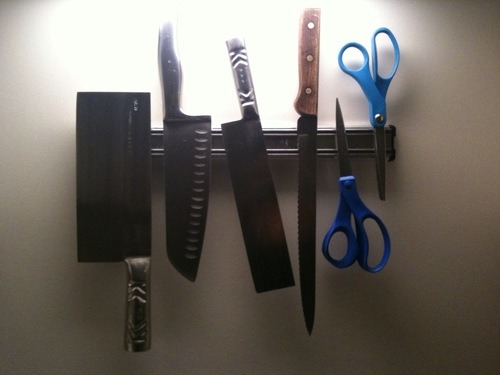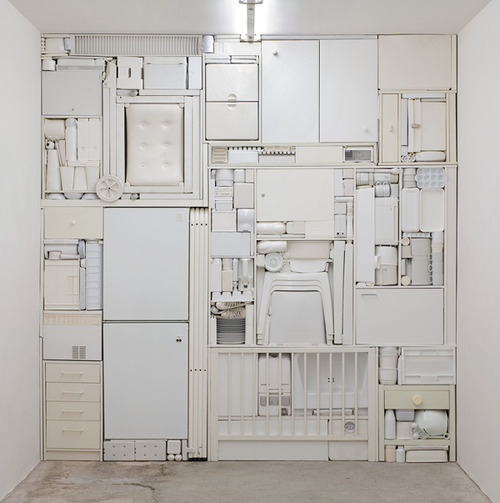
Dec 24, 2009
Dec 23, 2009
Dec 17, 2009
a pune, or a play on words

Posted by
vaughn tan
0
comments
![]()
![]()
Labels: craft, execution success, neat, san francisco
brisk; tasty
two observations:
- took my bike to coffee yesterday at 8am when it was -4F with wind chill (-20C, if you're in a country where the system of measures is rationalized). not a good time to forget gloves or a hat.
- the swedish have a baked good called a lussebulle (named for saint lucy, who appears to be its patron saint) that shows up around this time of year, after the feast of saint lucy. the lussebulle is shaped out of yeasted enriched bread spiced with saffron and cardamom, two of the three most expensive spices in the world by weight. the subtle ostentation is very appealing.
Posted by
vaughn tan
0
comments
![]()
![]()
Labels: bread, execution failure, execution success, food, stockholm
Dec 14, 2009
not single spies but in battalions
as the semester winds to a close, everything speeds up and slows down at the same time. this year, the end of fall is a little more fraught than usual: everything got bumped up three weeks so that we'd be done with exams and grading and papers before christmas. much better than spending the end of the old year and the start of the new one with many swords of damocles overhead. other benefit: this is the only fall semester i've ever spent here without the prospect of toiling to classes through snowdrifts. we'll still have the snow, but we'll be toiling through it on our way to things that are not class.
Posted by
vaughn tan
0
comments
![]()
![]()
Labels: bread, cambridge, execution failure
Dec 13, 2009
the moor
Breath held like a cap in the hand.
It was quiet.
What God there was made himself felt,
Not listened to, in clean colours
That brought a moistening of the eye,
In a movement of the wind over grass.
There were no prayers said. But stillness
Of the heart's passions – that was praise
Enough; and the mind's cession
Of its kingdom. I walked on,
Simple and poor, while the air crumbled
And broke on me generously as bread.
Posted by
vaughn tan
0
comments
![]()
![]()
Dec 11, 2009
scott nearing, on the good life
The good life is never stable, never secure, never easy and never ended. It is a series of steps or stages, one leading into the other and all, in their outcome, adding, not subtracting; augmenting, not diminishing; building, not destroying; creating, not annihilating.
unfortunately, not so easy to implement.
Posted by
vaughn tan
1 comments
![]()
![]()
Dec 9, 2009
Dec 8, 2009
sand
Posted by
vaughn tan
0
comments
![]()
![]()
Labels: cambridge, dis-ease, epistemology, execution failure, execution success
silver line


Posted by
vaughn tan
0
comments
![]()
![]()
Labels: boston, cities, craft, design, execution success, type craft
Dec 7, 2009
Dec 6, 2009
san francisco

 ritual, valencia st
ritual, valencia st
 sightglass, 7th st
sightglass, 7th st
 humphrey slocombe, harrison st.
humphrey slocombe, harrison st.
Posted by
vaughn tan
0
comments
![]()
![]()
Labels: drink, food, san francisco
Dec 2, 2009
the death of uncool
It’s odd to think back on the time—not so long ago—when there were distinct stylistic trends, such as “this season’s colour” or “abstract expressionism” or “psychedelic music.” It seems we don’t think like that any more. There are just too many styles around, and they keep mutating too fast to assume that kind of dominance.
...The idea that something is uncool because it’s old or foreign has left the collective consciousness.
I think this is good news. As people become increasingly comfortable with drawing their culture from a rich range of sources—cherry-picking whatever makes sense to them—it becomes more natural to do the same thing with their social, political and other cultural ideas. The sharing of art is a precursor to the sharing of other human experiences, for what is pleasurable in art becomes thinkable in life.
Posted by
vaughn tan
0
comments
![]()
![]()
Dec 1, 2009
Nov 30, 2009
the buzz
Haagen-Dazs has those extra “a’s in its name but also has a nice promotion to help bees. Honey bees of course. From Nov 5 to 11 Haagen-Dazs will run a twitter campaign that benefits the University of California at Davis and its noisy, dangerous, sticky programs to preserve bees. This will cause a lot of buzz.
Posted by
vaughn tan
0
comments
![]()
![]()
Nov 29, 2009
the circle unbroken
joan baez with a cast of muppets. note the pig in the upper left corner during the finale. [thx julian]
Posted by
vaughn tan
1 comments
![]()
![]()
Nov 26, 2009
"it's like twitter. except we charge people to use it."

i sometimes feel like doing this to people who ask me to design stuff for them for free.
Posted by
vaughn tan
0
comments
![]()
![]()
Nov 21, 2009
Nov 19, 2009
milton glaser on drawing
milton glaser is a partner in pentagram, one of the most influential design companies of the last century:
the act of drawing makes me conscious of what i'm looking at. if i wasn't drawing, i have the sense that i would not be seeing. ... i always think of every drawing as kind of a miraculous occurrence. it takes a while to do drawing that you find interesting. curiously, people think that the difficulty of drawing is making things look accurate. but accuracy is the least significant part of drawing. but you have to learn how to draw accurately before you can learn to do anything else. then you can begin to think about drawing expressively. that's another game entirely.
Posted by
vaughn tan
0
comments
![]()
![]()
granolanauts
update: jim reveals the granolas.
jim leff put together a granola blind tasting today in the east village at dba on 1st ave (which has a fine selection of draught beers and ciders). in these photos, you see the granolanauts surveying an expanse of assorted granolas in an intrepid fashion, then, midway through, in a less intrepid fashion. granola is not a low-calorie food.


Posted by
vaughn tan
1 comments
![]()
![]()
Labels: craft, epistemology, food
Nov 18, 2009
Nov 17, 2009
steak filter
video signal of the steak cooking, passed through the steak as it cooks. signal degrades as the steak loses moisture. i wonder if you would get the same result if the steak were cooked sous vide.
Posted by
vaughn tan
2
comments
![]()
![]()
Nov 13, 2009
lifebox

a few weeks back, paul stamets wrote to the scifoo mailing list to ask if anyone wanted one of the first run of his lifeboxes. these are cardboard panels seeded with tree seeds and symbiotic fungal spores that improve the growth and development of the seedlings. i wrote to say i wanted one but never heard back. i forgot about it. then, today, a small box appears on the front step.
which is nice.
Posted by
vaughn tan
0
comments
![]()
![]()
Labels: neat, sustainability, wood
Nov 9, 2009
experiments in food


Posted by
vaughn tan
1 comments
![]()
![]()
Labels: art, complexity, craft, epistemology, food, instruction, sociology, technology









